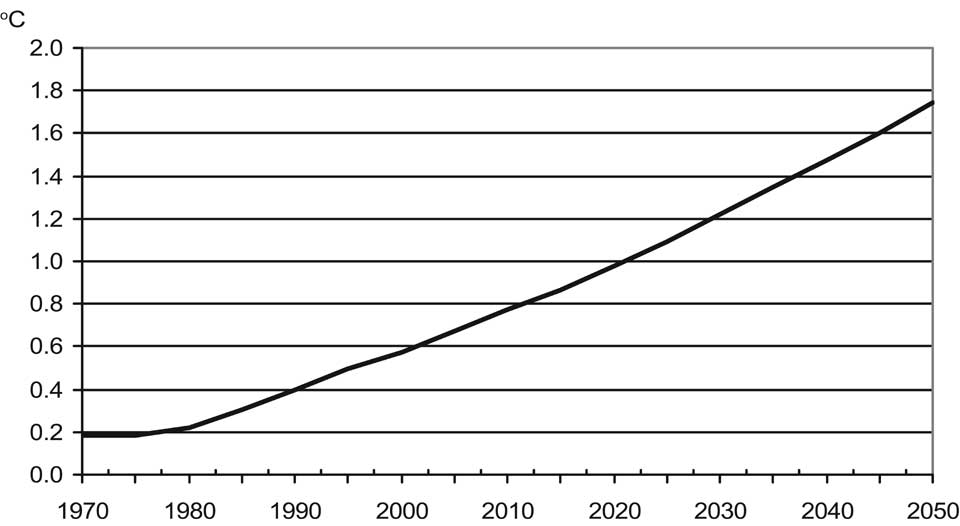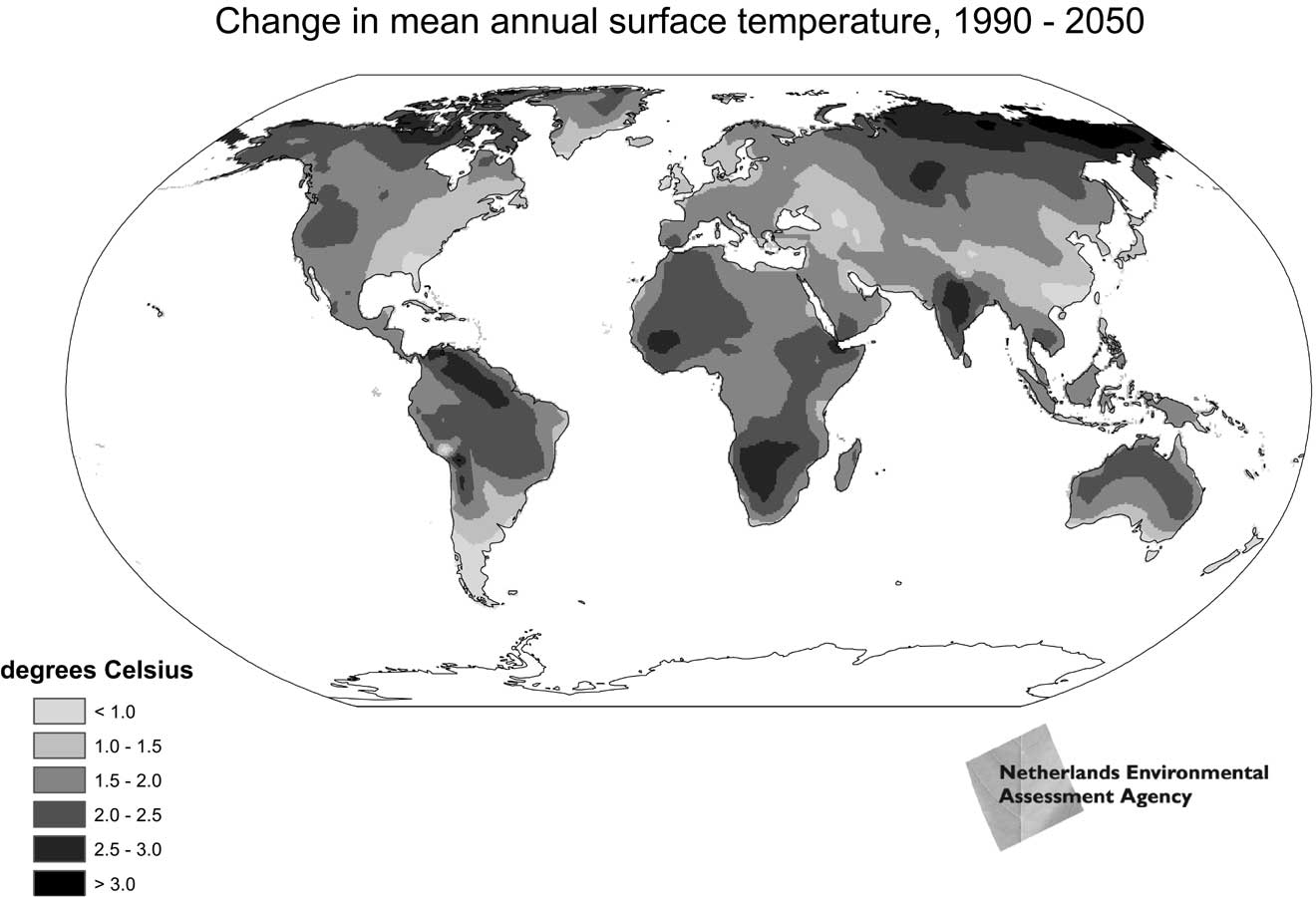
humans is still increasing until 2050 with an expansion of 4 million km2. The increasing demand for bioenergy is one of the important reasons for this development (Figure 5-16). In Figure 5-17, the regional breakdown is given for bioenergy areas being used for energy purposes. Although Latin America is currently one of the most important energy crop growing regions, in the future regions where land abandonment will occur increasingly (like in Russia) are expected to
overtake this market. This is mainly due to a high increase of agriculture in Latin America which leaves little room for any additional energy crops (see also 5.3.3.3). Moreover, in this approach most of the bioenergy is grown on land that is abandoned or on land that is low productive (see Appendix for the methodology; Hoogwijk et al., 2005).
These changes in land use also affect air quality and the atmospheric composition of greenhouse gases. Land use related emissions will continue to increase, mainly due to increased animal production (CH4 emissions) and fertilizer use (N2O emissions) (Figure 5-18). Carbon dioxide emissions due to land use change (deforestation) are expected to stay more or less constant.
5.3.3.6 Environmental consequences—forests and terrestrial biodiversity
Forests represent valuable natural ecosystems, with high potential to provide a variety of services to mankind and rich in biodiversity measured by the number of species. Although forest can regrow with time after clear-cutting for timber production, and after abandonment of agricultural production, these areas will revert only slowly to a more natural state, if ever. As a somewhat arbitrary definition, only forests that were established before 1970 are included in the count presented here. Therefore, regrowth forests after
